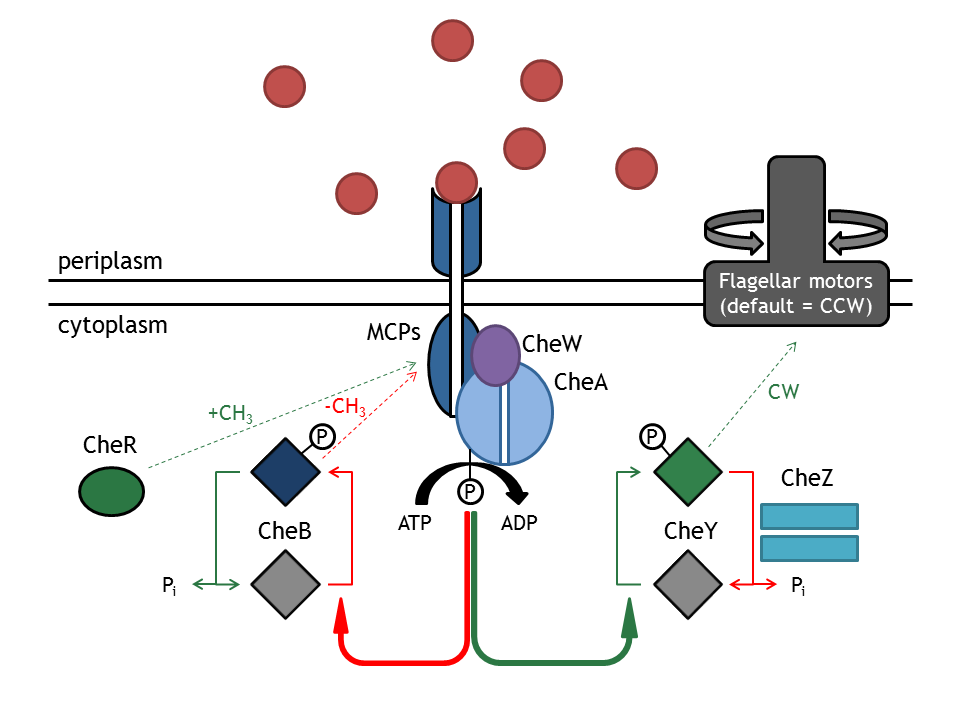Team:ETHZ Basel/Modeling/Combined
From 2010.igem.org
Combined Model
Interface
To combine light switch, chemotaxis and movement models, interfaces were defined. The combination was achieved in two steps:
- First, the deterministic light switch and chemotaxis models were combined by assuming a complete removal of a selected Che protein species by the light switch. The interface was defined as the concentration ([LSP-Che]) of this linked device.
- Second, the stochastic movement model was combined with the light switch - chemotaxis model. The link between the two was the dependency CheYp - running probability (or the bias), representing the output of the deterministic coupled model and the input of the probabilistic one. At every time point of the simulation, the next state (running/tumbling) of the bacterium was selected, based on the input bias.
Light switch - Chemotaxis
The following assumptions have been made according to the molecular mechanism to link the light switch and chemotaxis models:
Upon red light pulse induction, the two light-sensitive proteins dimerize and thus the coupled Che protein is spatially dislocated. This means,
- CheR is not able to methylate the MCPs anymore,
- CheY can't be phosphorylated and interact with the motor anymore; nevertheless, it still can be dephosphorylated.
Since CheB and CheZ regulate the chemotactic receptor pathway inverse compared to CheR and CheY, they repress tumbling
- CheB is not able to demethylate the MCPs and can't be phosphorylated anymore, but still can be dephosphorylated,
- CheZ can't dephosphorylate CheY anymore (This assumption is very unsteady, since CheY is not strictly located).
All of these assumptions will lead to a decrease of tumbling / directed movement ratio upon red light induction and an increase of corresponding far-red light induction.
Chemotaxis - Movement
The combination of the deterministic and probabilistic models was the biggest challenge in combining the models. CheYp concentration was received as an input from the coupled molecular model and, based on a literature - documented dependency between CheYp and running probability (the bias), the next state of the cell (running/tumbling) was determined.
The problem of different step-size could be solved by combination via Simulink and independent numerical integration of the two model types.
 "
"





